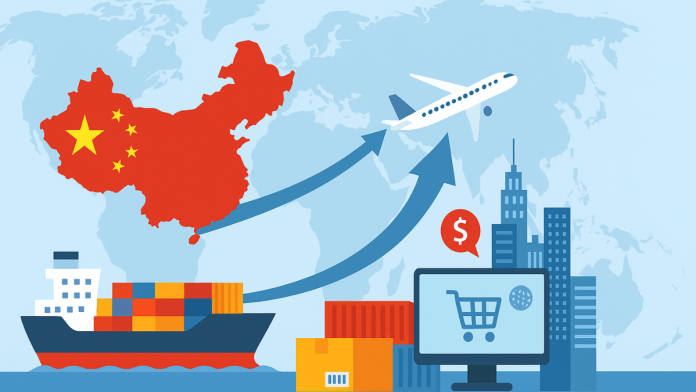A new report from Goldman Sachs has spotlighted 25 Chinese companies that are quickly growing their businesses beyond China’s borders. These companies are expected to gain big from expanding overseas, thanks to China’s strong supply chains, cost advantages, and improving product quality.
The report says these 25 firms have already seen their shares climb nearly 40% this year. That’s faster than the Hang Seng Index, which rose 29%, and the CSI 300 Index of major Chinese A-shares, which gained 16% in the same period.
The selected companies come from 25 different industries. They include well-known names like Alibaba Group Holding, BYD, and CATL (Contemporary Amperex Technology Co. Ltd.), as well as firms in healthcare, capital goods, and technology. These firms already earn about one-third of their total income from overseas markets.
Goldman Sachs notes that China’s leading companies are turning to global markets because the domestic market has become more crowded and competitive. As local demand slows, many Chinese companies are now searching for new growth opportunities abroad.
Rising Exports and Strong Overseas Growth
China’s exports have remained a key part of its economic strength this year. Even with trade tensions and tariffs, exports continued to grow. In September alone, exports rose 8.3% from a year earlier, faster than expected. Over the first nine months of the year, exports were up 4%.
After years of tension, China and Canada agree to restart dialogue and rebuild trust
This steady performance has encouraged many Chinese companies to look further abroad. China’s products are now reaching more destinations, especially in Southeast Asia, the Middle East, and Europe. While shipments to the United States have slightly dropped, sales to other countries have grown by more than 7% each year since 2018.
Goldman Sachs highlights that China is no longer just exporting low-cost goods. The country is now moving up the value chain, selling advanced products such as electric vehicles from BYD, lithium-ion batteries from CATL, solar panels, and high-end electronics. It is also exporting more services — like online shopping platforms from Alibaba, digital entertainment, and biotechnology research.
The report shows that companies listed in the MSCI China Index now make about 15% of their total sales from overseas. That number was only 11% in 2018. Some companies are already deeply connected to global markets. Zhongji Innolight, a telecom equipment maker listed in Shenzhen, earns nearly 87% of its revenue from overseas. Meanwhile, CATL gets about 30% of its revenue from outside China, and Alibaba has nearly doubled its overseas sales share, from 7% in 2021 to 13% last year.
Goldman Sachs adds that this overseas shift could lift company earnings by about 1.5% each year during this period.
Challenges Ahead But Momentum Remains Strong
While the global expansion looks promising, there are still challenges ahead. Trade tensions between China and the United States continue to cause uncertainty. The U.S. has recently discussed the idea of a new 100% tariff on Chinese goods. If that happens, Goldman Sachs estimates it could reduce profits for Chinese exporters by around 10% in the short term.
Ukraine’s defense strengthened by Trump’s daring fund backed by Chinese import levies
However, the report points out that Chinese firms have already proven their ability to adapt. During the trade disputes of recent years, many companies successfully redirected their exports to new markets and managed to keep growing.
China’s global trade patterns have shifted notably since it joined the World Trade Organization in 2001. Once known mainly as “the world’s factory” producing low-cost items such as toys and textiles, China now exports more high-end and technology-based goods. Leading companies like BYD, CATL, and Alibaba are gaining international market share in electric vehicles, digital services, and e-commerce. Zhongji Innolight also shows how specialized manufacturing firms are increasingly earning revenue from overseas.
Goldman Sachs says that Chinese companies are gaining market share in high-end manufacturing and services worldwide. They are also exporting culture and creativity through digital platforms, entertainment, and consumer experiences.
The trend of “going global” is expected to continue as companies strengthen their presence in markets outside the United States. By diversifying exports and offering better-quality products, these Chinese firms are building stronger international brands and expanding their global influence.
With exports growing and overseas sales becoming a bigger part of their business, China’s leading companies are proving they can compete on a global stage — and investors are taking notice.


